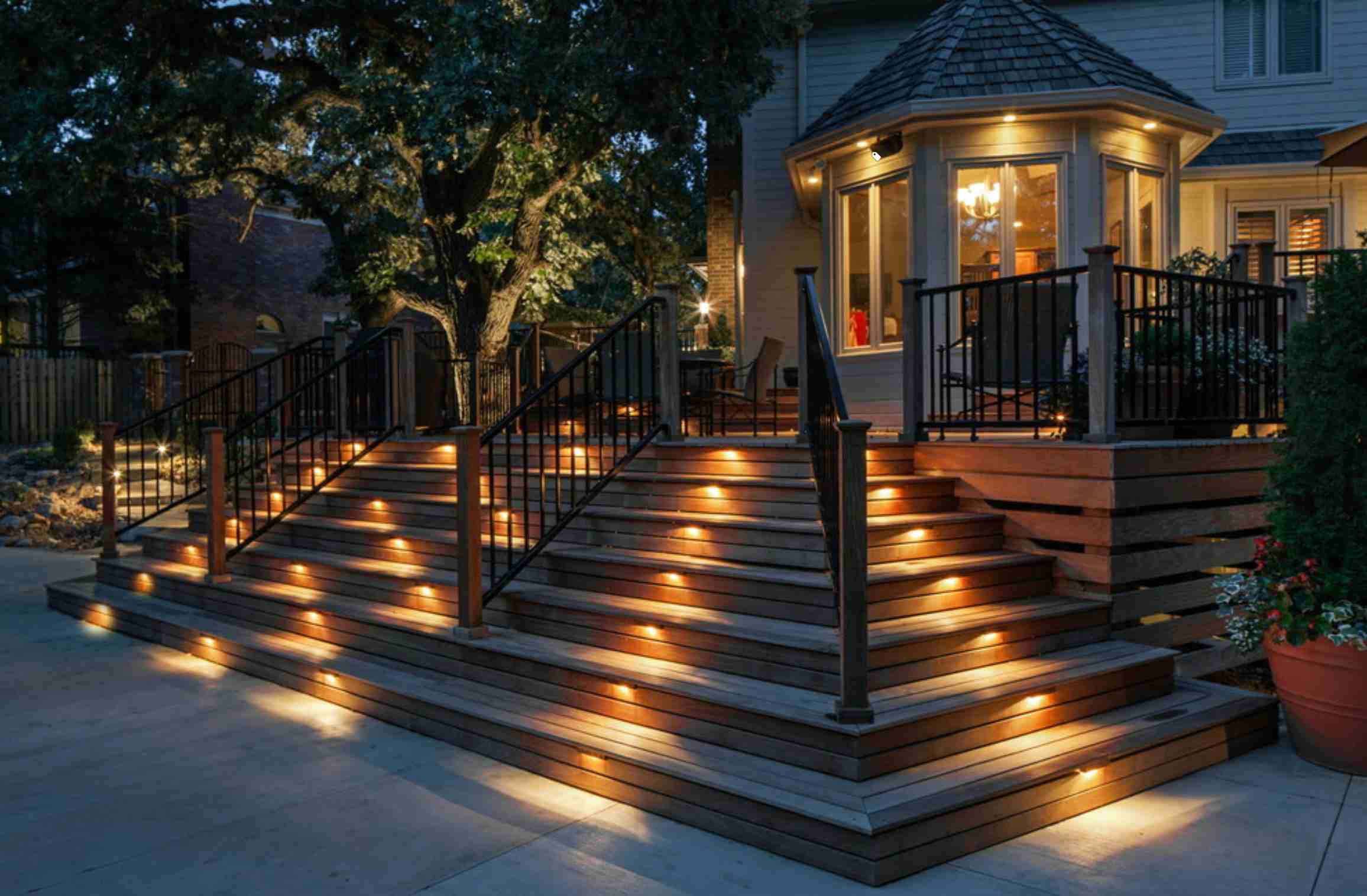Step and Stair LED Lighting Guide
1
Determine Lighting Requirements.
Determine your lighting requirements including the location, number of LED lights needed, and the load requirements for the Power Supply (Driver) by performing a simple calculation*.
Plan whether your lights will be run in Parallel or Series. If you want dimming capabilities, make sure the LED lights you purchase can be dimmed with a standard in-line dimmer, or if you need a Power Supply with dimming capabilities. (Link to an order form with only power supplies?)
2
Determine Wire and Accessories.
Estimate the amount of wire needed, and determine the required wire size and capabilities. If LEDs are going Outdoors, you will need the correctly sized and jacketed outdoor wire. If indoors, a standard 18 AWG wire may suffice. Basic LED lighting will be a two-wire (Positive and Negative), while RGB will be a four-wire configuration (Red, Green, Blue, and Negative), and RGBW five wires (Red, Green, Blue, White, and Negative).
3
Check Local Building Codes & Standards.
Be sure to check electrical code requirements and regulations for your region, and consult or hire an electrical contractor if unsure, or if hard-wiring is necessary.
4
PLAN LED Locations and Wire Routing.
Carefully plan and mark your LED lighting locations, paying specific attention to cut-out sizes, depths, and wire routing. If installing Power Supplies outdoors, they must be housed within regulation boxes, and wires installed underground must be run within appropriate conduit.
*Calculation:
(WATTS X QTY = TTL WATTAGE) +10% = minimum required wattage of power supply
(ie: 12 x M1 Step Lights =12W, 6 x RD7 Cabinet Lights =12W. TOTAL Wattage: 12+12 =24W + 10% =26.4W minimum. MINIMUM 30W Power Supply is required.)
Requirements
Outdoor Stair Lighting Requirements
Adding lighting to your outdoor stairs can provide illumination and decorative focal points to your decks, patios and garden stairways. Lighting requirements, such as local building codes and standards, provide rules that help people safely install outdoor lighting near their homes.
LED Light Requirements
Outdoor stair lights must be located in the vicinity of the stairs and be capable of illuminating or lighting up the entire stairwell, including the stair treads and the top and bottom landings. The lights may be turned on and off with remote controls, automatic or controlled with a central light switch. Central light switches must be indoors or accessible from a room near the outdoor stairs or located near an entryway near the stairs.
Motion Sensor Options
Continuously powered lights may be on a timer, a motion sensor, or photocell that will determine when it is dark and automatically turn connected lights on.
Electrical CODE Requirements
Please ensure the correct and proper safety codes for your region are followed when installing your LED lighting.
Codes for British Columbia, Canada
Outdoor Electrical Wiring
When installing lights that are connected to electrical wiring or electrical cables that are hooked up to the main circuit breaker in your home, you must use weatherproof or outdoor-rated light fixture electrical boxes, which safely hold the electrical wire connections and prevent water from coming into contact with the wires. Some locations may require that the electrical wiring for your outdoor stairs be installed inside conduit. Conduit is a type of plastic or PVC pipe, or it can be a metal pipe that holds electrical wiring. Depending on your local building codes, the conduit may have to be installed underground and run from the house to the lights or be installed near the stairs.
Dimming Options
Continuously powered lights may be on a timer, a motion sensor, or photocell that will determine when it is dark and automatically turn connected lights on.




